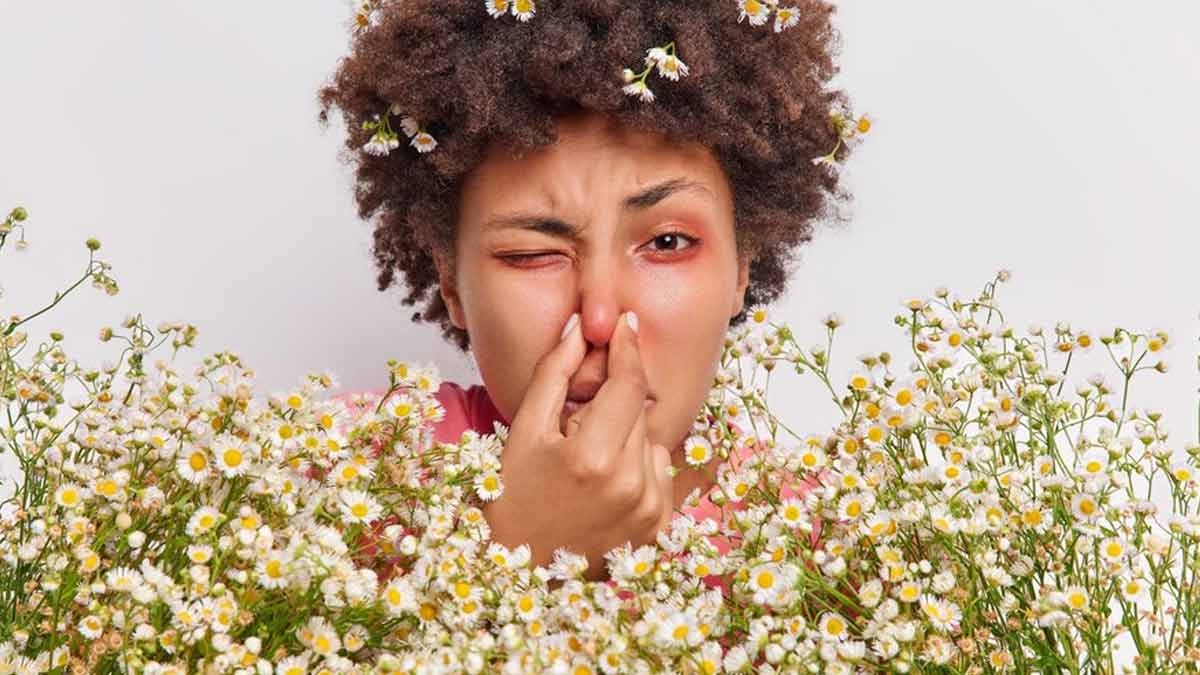
Spring is one of the most wonderful seasons of the year. With plants beginning to grow, flowers blooming, and the weather as pleasant as ever, it is a joyful experience. But unfortunately, for many people, with spring comes allergies. They usually occur when the immune system reacts to a foreign substance, such as pollen, bee venom, pet dander, or foods that mostly do not cause a reaction. This time of year can be extremely stressful for allergy sufferers. Therefore, we spoke to Dr Akshay Budhraja, Senior Consultant and HOD-Respiratory and Sleep Medicine, Aakash Healthcare, New Delhi, who shares a few tips to not only prevent exposure to allergy triggers but also help treat symptoms.
Table of Content:-
Also Read: Allergies In Children: Expert Lists Common Triggers, Reactions, And Management Tips
What Causes Allergies In Spring?

Allergies in the spring season are usually brought about by airborne pollen from trees, grass, and flowers, says Dr Budhraja.
“When these pollen are inhaled, the weakened immune system in some individuals can become overactive, causing symptoms such as sneezing, runny noses, sore eyes, and rashes,” he adds.
Allergic rhinitis is a common condition characterised by inflammation of the inside of the nose caused by an allergen, such as pollen, dust, mould, or flakes of skin from certain animals. According to a study published in Frontiers in Medicine, it affects approximately 40 crore people worldwide.
People who are at risk usually include:
- Individuals with a family history of allergies
- People with asthma and other respiratory conditions
- Those living in areas with high pollen counts
Other than this, children and young adults may be more susceptible to summer hives, although people of any age can be affected, the doctor shares further.
Common Symptoms Of Spring Allergies

Some of the common symptoms of spring allergies include:
- Red and watery eyes
- Sneezing
- Runny nose
- Itchy eyes, nose, ears, and mouth
- Stuffy nose due to congestion
- Puffy eyes
- Postnasal drip, where there is a sensation of mucus dripping down the back of the throat, and hives
- Breathlessness and wheezing, especially when atopic people are exposed to pollen and other allergens
Also Read: Expert Explains Myths & Facts Related To Allergies
How To Reduce Exposure To Allergy Triggers?
To reduce your exposure to allergy triggers, Dr Budhraja recommends:
- Staying indoors when the weather is dry and windy
- Avoiding mowing lawns, pulling weeds, and other gardening chores that can stir up allergens
- Removing the clothes that you have worn outside and taking a shower to get rid of pollen from your skin and hair
- Avoid drying laundry outside, as pollen might stick to sheets and towels
- Wearing a mask when working outside
He further advises taking extra precautions when pollen counts are high, such as checking your local TV or radio station for current pollen levels and forecasts. When the pollen forecast is high, prefer staying indoors and start taking allergy medications before the onset of symptoms. Use a face mask when outdoors.
Treatment Options

There are several medications available to treat spring allergy problems, including both Over-The-Counter (OTC) medications and medications with a prescription, says Dr Budhraja.
Antihistamines can help with symptoms like itchy eyes and nose, runny nose, and sneezing, whereas nasal corticosteroids are a form of nasal spray that lowers inflammation, which is considered the most effective treatment for allergic rhinitis.
You can also take decongestants as they operate by shrinking the lining of the nasal passages, hence decreasing stuffiness. Decongestants are available in pill, liquid, drop, and nasal spray forms. However, note that long-term use may create adverse effects.
Leukotriene receptors are pills that inhibit the function of some substances that cause allergic responses.
Eye drops are used to treat eye allergies.
For some patients, allergy shots (allergen immunotherapy) may be a viable option, the doctor adds.
Furthermore, in patients with bronchospasm, which leads to breathlessness, nebulised medications are used to subside the inflammation and swelling around the airway.
Conclusion
Spring is a beautiful time of the year. But it can also lead to intense allergic reactions and symptoms. While you cannot change the course of the climate, you must take precautionary measures against allergic reactions that can arise during the season. Speak to your doctor to prescribe you medications for the same and avoid any exposure to allergy triggers, such as airborne pollen from trees, grass, and flowers.
Also watch this video
How we keep this article up to date:
We work with experts and keep a close eye on the latest in health and wellness. Whenever there is a new research or helpful information, we update our articles with accurate and useful advice.
Current Version